Last week, my friend Sarah texted me in desperation: “My 7-year-old says reading is boring and refuses to pick up any book!” I immediately thought of my own kids and how everything changed when we discovered animal stories. There’s something magical about these tales that turns even the most reluctant readers into kids begging for “just one more chapter.”
Ask any librarian what kids request most, and they’ll tell you: animal stories win every time. And honestly? I get it. I remember discovering this firsthand when my nephew, who typically resisted bedtime reading, became completely captivated by a simple story about a mischievous rabbit – suddenly, he was asking for “just one more chapter” every night.
Animal stories possess a special magic that transforms reluctant readers into book lovers. These tales offer children safe spaces to explore complex emotions, learn valuable life lessons, and develop empathy through characters that feel both familiar and wonderfully different from their everyday experiences.
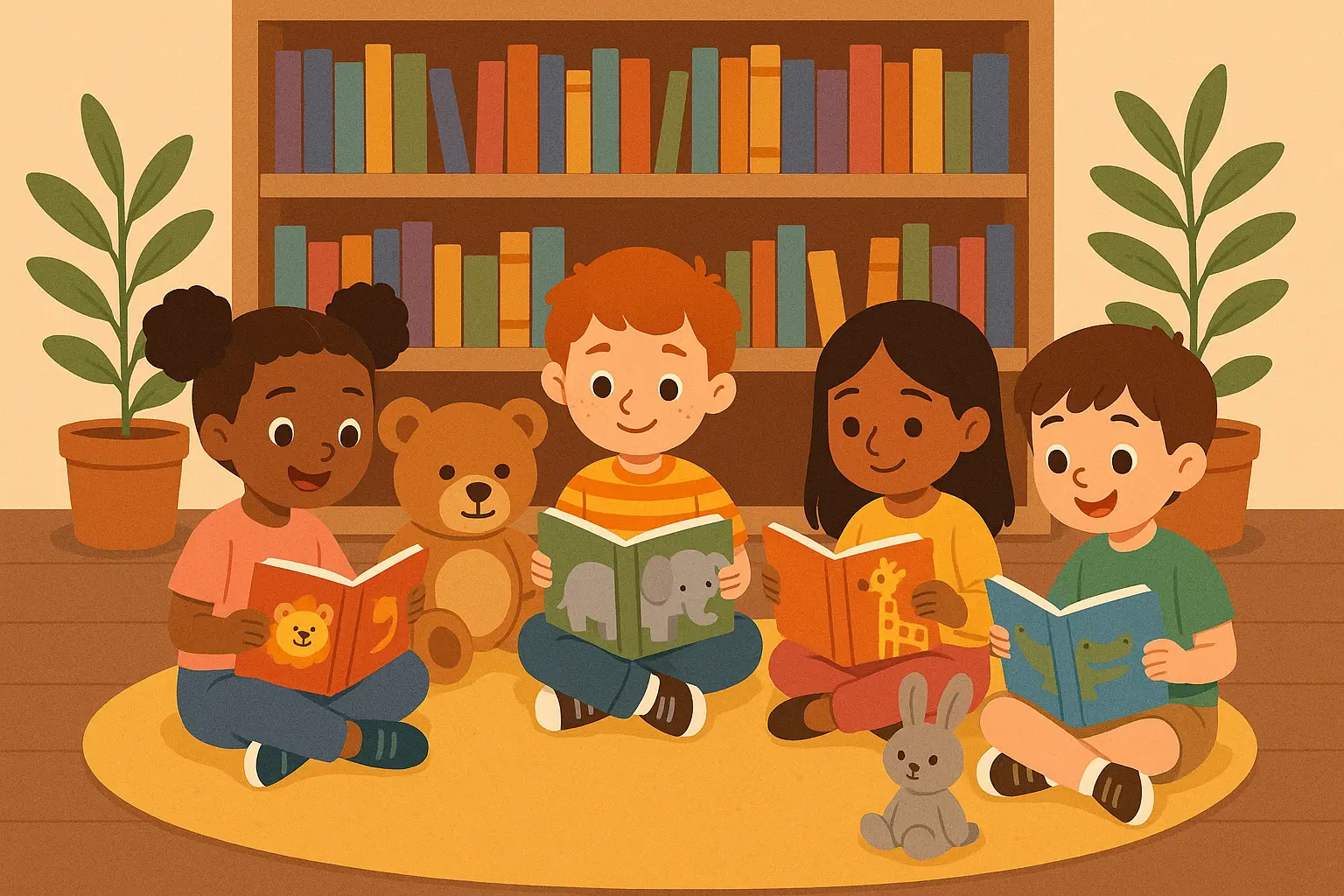
Table of Contents
-
What to Actually Look for (Beyond Just Cute Animals)
-
Top 25 Animal Stories for Kids Across Six Categories
-
Classic Animal Adventures (Stories 1-4)
-
Modern Environmental Tales (Stories 5-9)
-
Friendship and Social Skills (Stories 10-14)
-
Farm and Domestic Animal Stories (Stories 15-19)
-
Wild Animal Adventures (Stories 20-23)
-
Magical and Fantasy Animal Tales (Stories 24-25)
-
-
What Actually Works: Real Parent Insights
-
How to Actually Use These Books
-
When Books Don’t Work (And That’s Okay)
TL;DR
-
Age recommendations are starting points, not gospel – trust your kid’s instincts about what clicks
-
The best animal stories teach without preaching – kids naturally absorb lessons through engaging characters
-
Preview books first to avoid bedtime emotional meltdowns (learned this the hard way!)
-
Look for stories that spark natural conversations and connect to real-world experiences
-
Don’t force books that aren’t working – there are too many great options to waste time on duds
-
Humor is your secret weapon – books that make you both laugh create lasting positive reading associations
-
Stories ranging from simple picture books to complex novels ensure something for every kid and mood
What to Actually Look for (Beyond Just Cute Animals)
We’ve all been there – standing in the library or bookstore, overwhelmed by choices, wondering if this book will be too scary, too babyish, or just plain boring. Here’s what I’ve learned after years of trial and error (and a few bedtime reading disasters).
Choosing animal stories isn’t just about finding cute characters or exciting adventures. You need to consider several things that determine whether a story will actually benefit your child’s development and reading journey – not just sit on the shelf looking pretty.
Age Appropriateness and Reading Level
Look, I’m not going to sugarcoat this – picking the wrong book for your kid’s age can turn story time into a battle nobody wins. I’ve watched my neighbor’s 4-year-old get completely overwhelmed by a chapter book, and I’ve seen 10-year-olds roll their eyes at picture books they think are “babyish.”
Here’s what actually works: Younger kids (3-6) need books they can follow without getting lost. Think simple words, lots of pictures, and stories that don’t drag on forever. Your preschooler’s attention span is about as long as a commercial break, so work with that, not against it.
Older kids (7-12) are ready for meatier stories, but don’t assume they want to tackle War and Peace just yet. They want adventure, characters they care about, and plots that actually go somewhere.
Quick reality check: That reading level on the back of the book? It’s a starting point, not gospel. Your kid knows what clicks for them better than any algorithm.
When choosing stories for different age groups, consider exploring our comprehensive guide to bedtime stories that work for additional age-appropriate selections. Short animal stories work particularly well for younger readers who need quick, satisfying narratives.
|
Age Group |
What Actually Works |
Red Flags to Avoid |
Books That Hit the Sweet Spot |
|---|---|---|---|
|
3-5 years |
Repetitive words, clear pictures |
Too much text per page |
Peter Rabbit, Rosie’s Walk |
|
6-8 years |
Short chapters, relatable problems |
Adult themes in kid packaging |
Frog and Toad, Rainbow Fish |
|
9-12 years |
Real stakes, complex friendships |
Talking down to them |
Charlotte’s Web, Julie of the Wolves |
Educational Value and Life Lessons
Can we talk about preachy books for a second? You know the ones – where the moral lesson hits you over the head like a cartoon anvil. Kids smell that fake stuff from a mile away, and honestly, so do we.
The best animal stories teach without feeling like homework. Take Charlotte’s Web – nobody sits your kid down and says “Now, children, this is about sacrifice and friendship.” Instead, they watch Charlotte spin words in her web and naturally get what real friendship looks like.
I learned this when my oldest came home from school talking about how he wanted to help the new kid who was sitting alone at lunch. Turns out, we’d been reading about how Frog always looked out for Toad, and it just… clicked. That’s the magic you’re looking for.
Emotional Impact and Safety
Here’s where I’m going to be that parent who learned the hard way: preview books before you commit to bedtime reading. I once started “Where the Red Fern Grows” with my animal-loving 7-year-old without flipping through it first. Three chapters in, we’re both crying, and she’s asking questions about death that I wasn’t ready to tackle at 8 PM on a school night.
That doesn’t mean avoid all emotional content – kids need to process feelings through stories. But know what you’re signing up for. Some kids handle sad parts better than others, and timing matters. Maybe don’t introduce mortality themes right after the family goldfish dies, you know?
Trust your gut here. You know your kid better than any book reviewer. If they’re sensitive to animal stories, start gentle and work your way up to the heavier stuff.
Cultural Sensitivity and Representation
This one’s important, and it’s gotten so much better in recent years. We want our kids seeing diverse characters and perspectives, not the same old stories told the same old way.
Look for books that show different cultures respectfully – not as exotic curiosities, but as normal parts of our world. “Brother Eagle, Sister Sky” does this beautifully with Native American perspectives on nature. It’s educational without being tokenistic.
And hey, if you’re not sure about cultural accuracy, ask your librarian. They’ve usually done the homework on which books get it right.
Literary Quality and Engagement Factor
I’m not saying every book needs to be Shakespearean, but life’s too short for badly written stories. You’ll know good writing when you see it – it flows naturally, the characters feel real, and you actually want to know what happens next.
Here’s my test: if I’m secretly enjoying the story while reading aloud, that’s a winner. If I’m mentally making my grocery list while my kid zones out, we’re moving on to something better.
Understanding effective narrative structure becomes crucial when evaluating quality stories, much like the principles outlined in our guide on brain science behind effective storytelling.
Pro tip: Books that make you both laugh out loud? Pure gold. “Click, Clack, Moo” had my whole family cracking up, and my kids still quote it years later.
Practical Application and Discussion Opportunities
The best animal stories give you natural conversation starters. Not forced “What did we learn today?” moments, but genuine curiosity from your kid.
When we read “The Great Kapok Tree,” my daughter started noticing trees everywhere and asking about rainforests. That led to looking up conservation groups online, which led to her choosing a rainforest charity for her birthday donations. All from one picture book.
That’s what you want – stories that connect to real life and spark genuine interest, not just check educational boxes.
Top 25 Animal Stories for Kids Across Six Categories
Okay, let’s dive into the actual books. I’ve organized these by what they’re actually good for, not some fancy literary categories. Think of this as your cheat sheet for different situations – whether you need a quick bedtime story, want to tackle bigger themes, or just need something that’ll keep your kid entertained on a rainy day.
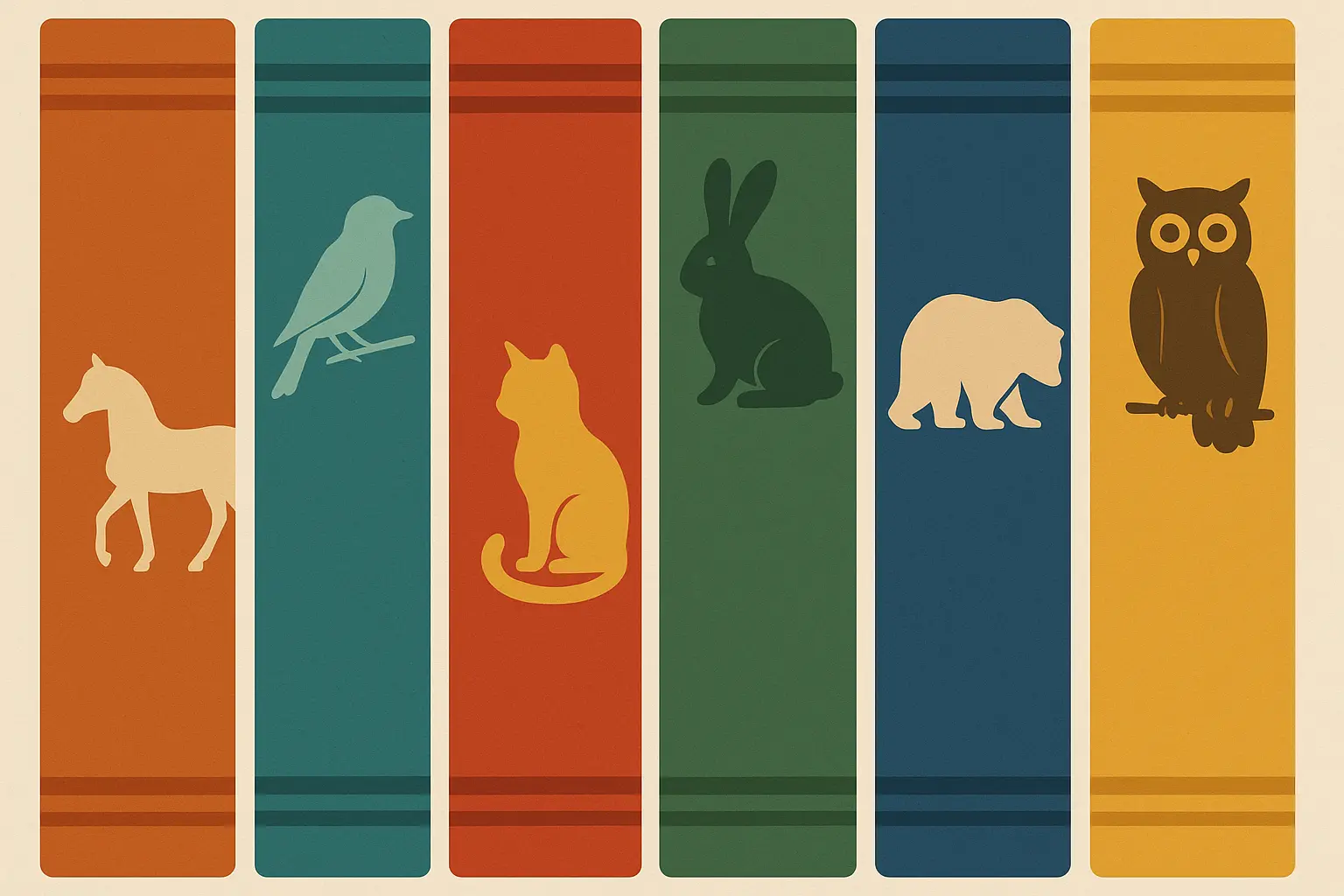
Classic Animal Adventures (Stories 1-4)
These are the heavy hitters – the books that have been making kids fall in love with reading for decades. There’s a reason they stick around.
1. Charlotte’s Web by E.B. White
Let’s just get this out of the way – yes, Charlotte dies. Yes, your kid might cry. Yes, it’s still worth it.
This book is basically a masterclass in friendship, wrapped up in a story about a pig and a spider. Wilbur learns what it means to have someone believe in you, and Charlotte shows what real love looks like – the kind that puts someone else first.
Real talk: This book hits different when you’re an adult reading it aloud. The writing is gorgeous, the themes are deep, and somehow White manages to make a spider one of the most lovable characters in children’s literature.
Best for: Kids 8+ who are ready for bigger emotions and complex friendships.
2. The Tale of Peter Rabbit by Beatrix Potter
This little guy has been getting into trouble in Mr. McGregor’s garden for over a century, and kids still love him. It’s the perfect balance of naughty behavior and natural consequences – Peter gets in trouble, learns his lesson, but doesn’t get traumatized in the process.
The illustrations are pure magic, and the story is short enough that even wiggly kids can stick with it. Plus, Potter knew her stuff about rabbits – the details feel real and lived-in.
Perfect for: Ages 3-7, especially kids who like a little mischief in their stories.
3. Where the Red Fern Grows by Wilson Rawls
Fair warning: this one’s an emotional rollercoaster. Billy’s determination to get his hunting dogs and the bond he forms with them is beautiful, but the ending will wreck you both.
That said, it’s an incredible story about perseverance, hard work, and the deep connection between humans and animals. If your kid is ready for bigger themes and can handle some sadness, this book will stick with them forever.
Best for: Ages 10+ who can handle emotional complexity and aren’t too sensitive about animal stories.
4. The Wind in the Willows by Kenneth Grahame
This one’s a bit old-fashioned, but in the best way. Mole, Rat, Badger, and Toad feel like that group of friends we all had (or wanted to have) – each with their own personality quirks, but loyal to each other when it counts.
The language is richer than modern books, which makes it great for expanding vocabulary, but some kids find it slow. Try a chapter and see how it lands.
Good for: Ages 8+ who don’t mind a gentler pace and appreciate friendship stories.
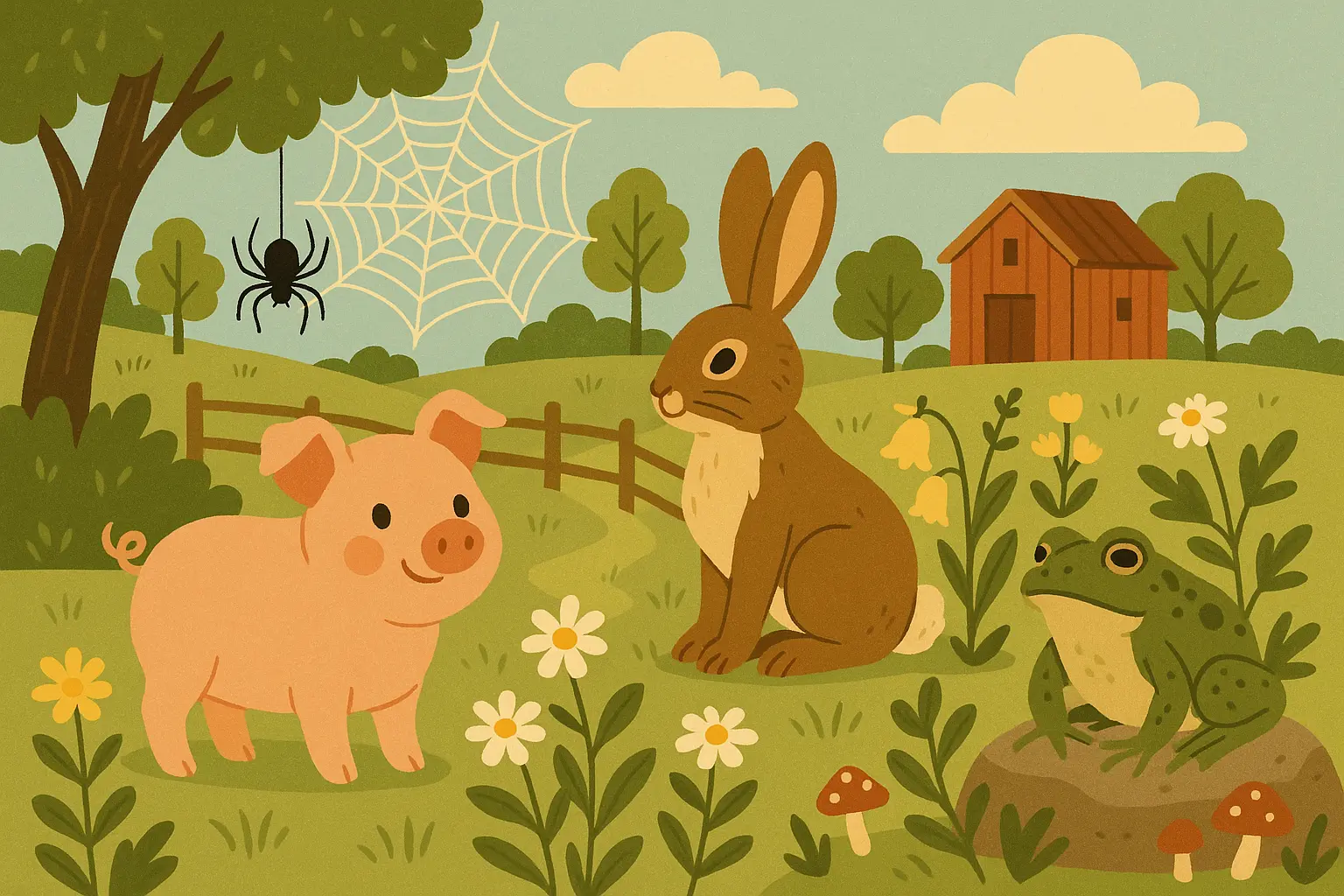
Modern Environmental Tales (Stories 5-9)
These books tackle environmental themes without being preachy about it. They’re perfect for nature-loving kids or when you want to spark conversations about taking care of our planet.
5. The Great Kapok Tree by Lynne Cherry
A man falls asleep while trying to cut down a rainforest tree, and all the animals whisper to him about why their home matters. The illustrations are stunning, and the message is clear without being heavy-handed.
What I love about this book is how it shows interconnectedness – every animal depends on the tree in different ways. It’s a great conversation starter about how everything in nature is connected.
Perfect for: Ages 4-8, especially kids who love detailed illustrations and animal facts.
6. The Wump World by Bill Peet
This book was ahead of its time – it came out in 1970 but feels incredibly relevant today. The Wumps live in a beautiful, clean world until the Pollutians arrive and mess everything up. But here’s the thing – it ends with hope, showing how nature can recover.
The message is clear, but it’s not doom and gloom. Kids get the environmental lesson without feeling overwhelmed by climate anxiety.
Great for: Ages 5-9, kids who are starting to understand environmental issues.
7. Brother Eagle, Sister Sky by Chief Seattle
This book presents Native American perspectives on environmental stewardship through beautiful, reverent language. It teaches respect for all living things and our responsibility as caretakers.
The illustrations are gorgeous, and it offers a different cultural perspective that’s often missing from children’s books. Just be prepared for some deeper conversations about history and different ways of seeing the world.
Best for: Ages 6-10, when you want to introduce different cultural perspectives on nature.
8. The Polar Bear Son by Lydia Dabcovich
This Inuit folktale about a woman who raises a polar bear cub explores adoption, cultural identity, and Arctic wildlife. It’s a gentler introduction to different cultures and the relationship between humans and wild animals.
The story respects both the Inuit tradition it comes from and the reality of wild animal behavior. It’s educational without feeling like a lesson.
Good for: Ages 5-9, especially if you’re looking for diverse cultural stories.
These environmental tales often draw from rich cultural traditions, similar to the storytelling patterns found in our collection of transformative folktale examples.
9. The Mangrove Tree by Susan Schaefer Bernardo
Set in the Florida Everglades, this follows a manatee mother and baby through their ecosystem. It’s a nice introduction to wetlands and unique wildlife that kids might not know about.
The story combines adventure with environmental education in a way that feels natural. Plus, manatees are pretty irresistible to most kids.
Perfect for: Ages 4-8, kids interested in ocean life and conservation.
Parent tip: After reading “The Great Kapok Tree,” try looking up local environmental groups with your kids. We found a tree-planting organization in our area, and now it’s become a family volunteer activity. Stories work best when they connect to real action.
Friendship and Social Skills (Stories 10-14)
These are your go-to books for navigating playground drama, teaching empathy, and helping kids figure out how to be good friends. They’re like social skills training disguised as entertaining stories.
10. Frog and Toad Series by Arnold Lobel
If I could only recommend one series for early readers, this would be it. Frog and Toad are best friends who are completely different – Frog is optimistic and outgoing, Toad is anxious and grumpy – but they love each other anyway.
Each short story tackles real friendship issues: feeling left out, being disappointed, dealing with fear, sharing experiences. The solutions feel authentic, not preachy. My kids quoted these books for years.
Perfect for: Ages 4-8, especially kids learning to read independently or navigate friendships.
11. The Rainbow Fish by Marcus Pfister
Okay, this one’s a bit controversial among parents – some think it teaches kids to give away their special qualities to be liked. I get that concern, but I think most kids understand it’s about sharing and not being stuck-up.
The holographic scales are absolutely mesmerizing to young kids, and the story sparks good conversations about what makes someone a good friend.
Good for: Ages 3-7, with some adult guidance to discuss the sharing message.
12. Stellaluna by Janell Cannon
A baby bat gets separated from her mom and raised by birds, struggling with being different from her adoptive family. It’s a beautiful story about identity, belonging, and accepting differences.
What I love is how it shows that families can look different and that’s okay. Plus, it teaches real facts about bats, which helps kids get over any “icky” feelings about them.
Great for: Ages 4-9, kids dealing with feeling different or adoption themes.
13. The Lion and the Mouse by Jerry Pinkney
This wordless version of Aesop’s fable is absolutely gorgeous. The detailed illustrations tell the whole story of how a tiny mouse saves a mighty lion, proving that everyone has value regardless of size.
Without words, kids can interpret the story themselves and practice visual literacy skills. It’s also great for building confidence in kids who aren’t strong readers yet.
Perfect for: Ages 3-8, especially kids who love detailed pictures or struggle with reading.
14. Owen and Mzee by Isabella Hatkoff
This true story about a baby hippo and elderly tortoise who became friends after the 2004 tsunami is absolutely heartwarming. It shows that friendship can transcend differences and that resilience is possible even after trauma.
The photographs of the real Owen and Mzee make it even more special. Kids love knowing this actually happened.
Best for: Ages 5-10, kids who love true animal stories and themes of resilience.
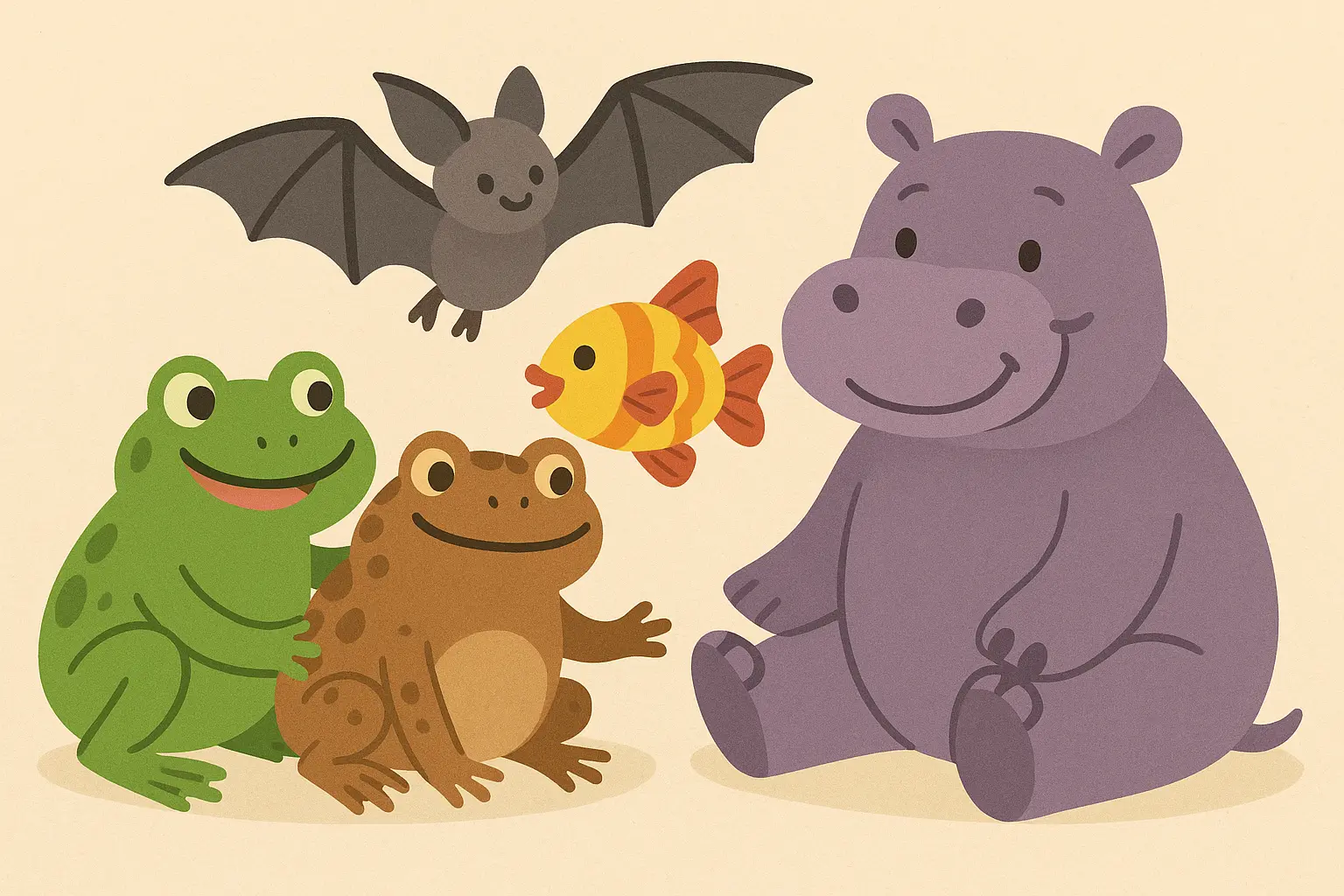
Farm and Domestic Animal Stories (Stories 15-19)
These connect kids to where their food comes from and the animals that share our daily lives. They’re great for city kids who don’t see farm animals regularly, and they teach responsibility and work ethics in relatable ways.
15. Click, Clack, Moo: Cows That Type by Doreen Cronin
This book is pure comedy gold. Farmer Brown’s cows find a typewriter and start making demands for better working conditions. It’s hilarious, but it also introduces concepts about fairness, negotiation, and workers’ rights in a kid-friendly way.
My family still quotes this book – “Click, clack, moo” became our code for any kind of silly complaint or negotiation.
Perfect for: Ages 3-8, kids who love humor and silly situations.
16. The True Story of the Three Little Pigs by Jon Scieszka
The wolf tells his side of the story, and suddenly everything looks different. This clever retelling teaches kids about perspective – how the same events can look completely different depending on who’s telling the story.
It’s great for developing critical thinking skills and understanding that there are usually multiple sides to any conflict.
Great for: Ages 5-10, kids ready to think about different perspectives.
17. Rosie’s Walk by Pat Hutchins
This nearly wordless book follows a hen walking around the farmyard, completely oblivious to the fox following her into various mishaps. It’s suspenseful and funny, perfect for very young readers.
Kids love predicting what will happen next and “reading” the story through the detailed illustrations. It builds visual literacy and sequencing skills.
Perfect for: Ages 2-6, especially pre-readers and kids who love visual storytelling.
18. The Little Red Hen by various authors
This classic teaches the value of hard work and personal responsibility as the hen does all the work of planting, tending, and harvesting wheat while other animals refuse to help.
Some parents worry it’s too harsh about not sharing, but most kids understand the basic fairness principle: if you don’t help with the work, you don’t get to enjoy the rewards.
Good for: Ages 3-7, teaching work ethic and consequences.
19. Farmer Boy by Laura Ingalls Wilder
Young Almanzo’s life on a 19th-century farm shows the relationship between farmers and their animals, seasonal cycles, and how much work goes into producing food.
It’s educational about agricultural life and gives kids perspective on where their food comes from. The historical details are fascinating, though some may need explanation for modern kids.
Best for: Ages 7-12, kids interested in history and farm life.
|
Story Type |
What Your Kid Will Actually Learn |
Best Ages |
Conversation Starters |
|---|---|---|---|
|
Classic Adventures |
Deep friendships, handling loss |
6-12 years |
“What makes someone a good friend?” |
|
Environmental Tales |
Caring for our planet |
4-10 years |
“What can we do to help animals/nature?” |
|
Friendship Stories |
How to be a good friend, accepting differences |
3-8 years |
“How do you handle disagreements with friends?” |
|
Farm Stories |
Where food comes from, work ethic |
4-9 years |
“What jobs do animals do to help people?” |
|
Wild Adventures |
Respecting wildlife, survival skills |
8-12 years |
“How should people interact with wild animals?” |
|
Fantasy Tales |
Right vs. wrong, using imagination |
7-12 years |
“What would you do if animals could talk?” |
Wild Animal Adventures (Stories 20-23)
These are for kids ready for bigger adventures and more complex themes. They teach respect for wildlife while delivering genuine excitement and survival stories.
20. Julie of the Wolves by Jean Craighead George
A young Inuit girl survives in the Arctic by learning to communicate with wolves. This book is incredible for teaching about both wolf behavior and Indigenous culture, but it doesn’t shy away from serious themes like arranged marriage and cultural conflict.
The survival elements are fascinating, and George really knew her stuff about wolves. Your kid will come away with genuine respect for these animals and a better understanding of Arctic life.
Best for: Ages 10+, kids ready for complex cultural and survival themes.
21. My Side of the Mountain by Jean Craighead George
Sam runs away to live in the Catskill Mountains for a year with his trained falcon, Frightful. It’s every kid’s fantasy of living independently in nature, but grounded in real survival knowledge.
The falconry details are amazing, and the book teaches genuine outdoor skills. Just be prepared for your kid to start asking about camping trips and wanting to identify local birds.
Perfect for: Ages 9-12, especially kids who love outdoor adventures.
22. The One and Only Ivan by Katherine Applegate
Based on a true story, Ivan is a gorilla living in captivity at a shopping mall who dreams of freedom. This Newbery Medal winner tackles animal rights and captivity without being preachy or overwhelming.
Ivan’s voice is authentic and touching, and the story shows how intelligent and emotional gorillas really are. It raises important questions about how we treat animals without making kids feel guilty about zoos or circuses.
Great for: Ages 8-12, kids ready to think about animal welfare.
23. Hatchet by Gary Paulsen
Brian survives alone in the Canadian wilderness after a plane crash, learning to coexist with wildlife while figuring out how to stay alive. The animal encounters feel real and teach genuine respect for wild creatures.
This book is all about problem-solving and resilience. Brian doesn’t become some wilderness superhero – he makes mistakes, gets scared, and figures things out gradually, which makes it feel authentic.
Best for: Ages 10+, kids who love survival stories and outdoor adventures.
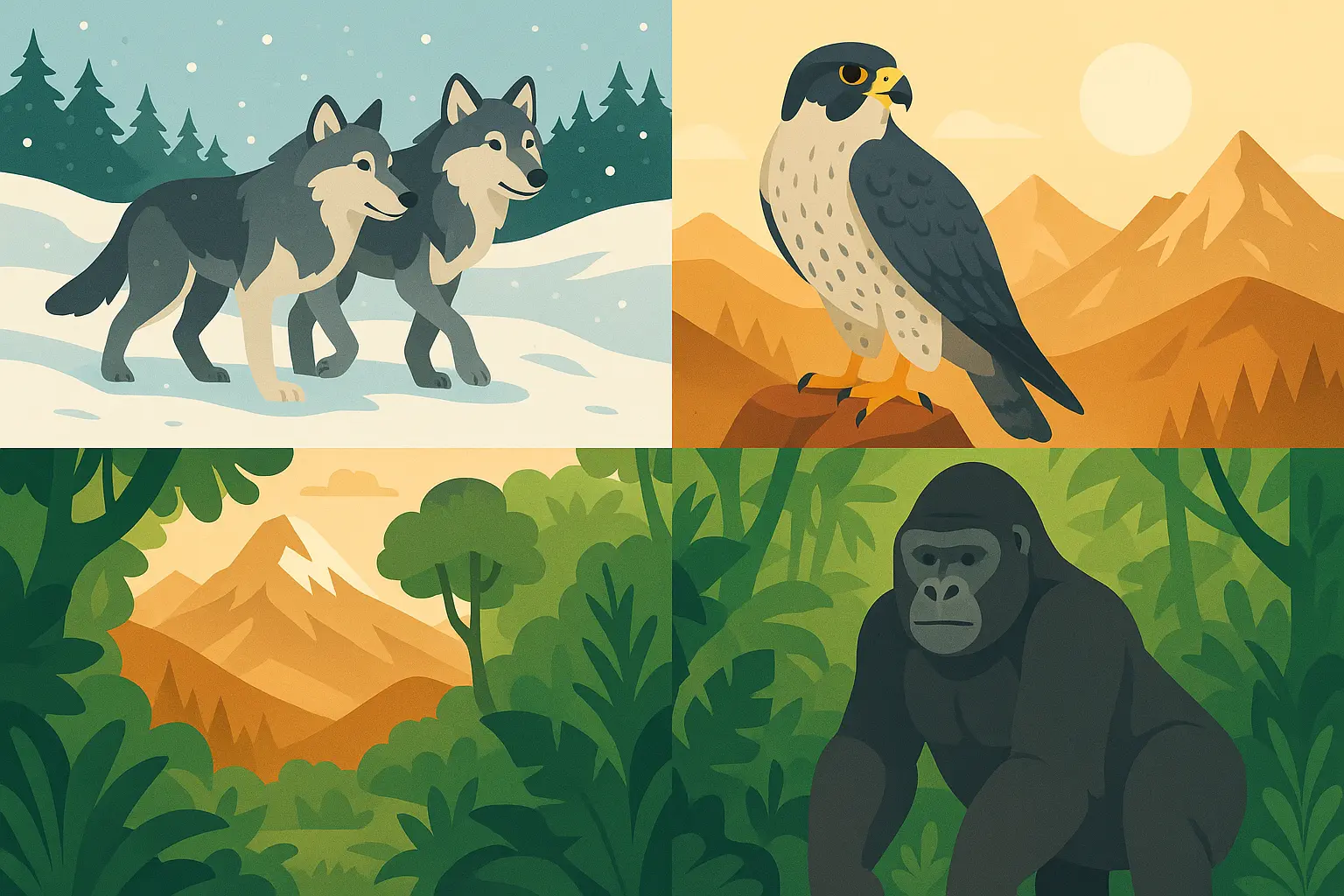
Magical and Fantasy Animal Tales (Stories 24-25)
These books use fantasy elements to explore bigger themes and moral questions. They’re perfect for kids ready to think about complex issues through imaginative storytelling.
24. The Chronicles of Narnia: The Lion, the Witch and the Wardrobe by C.S. Lewis
Aslan the lion represents courage, sacrifice, and redemption in this fantasy classic. The talking animals of Narnia have agency and wisdom, creating a world where creatures are partners rather than pets.
The Christian allegory might not work for every family, but the adventure elements and talking animals have universal appeal. It’s a great introduction to fantasy literature.
Good for: Ages 8-12, kids ready for longer fantasy adventures.
25. Mrs. Frisby and the Rats of NIMH by Robert C. O’Brien
When Mrs. Frisby’s son gets sick, she turns to a colony of super-intelligent rats who escaped from a laboratory. This science fiction tale raises questions about animal experimentation and what it means to be intelligent.
The rats aren’t villains – they’re complex characters dealing with the ethics of their situation. It’s a great introduction to thinking about scientific responsibility and animal rights.
Perfect for: Ages 9-12, kids interested in science fiction and ethical questions.
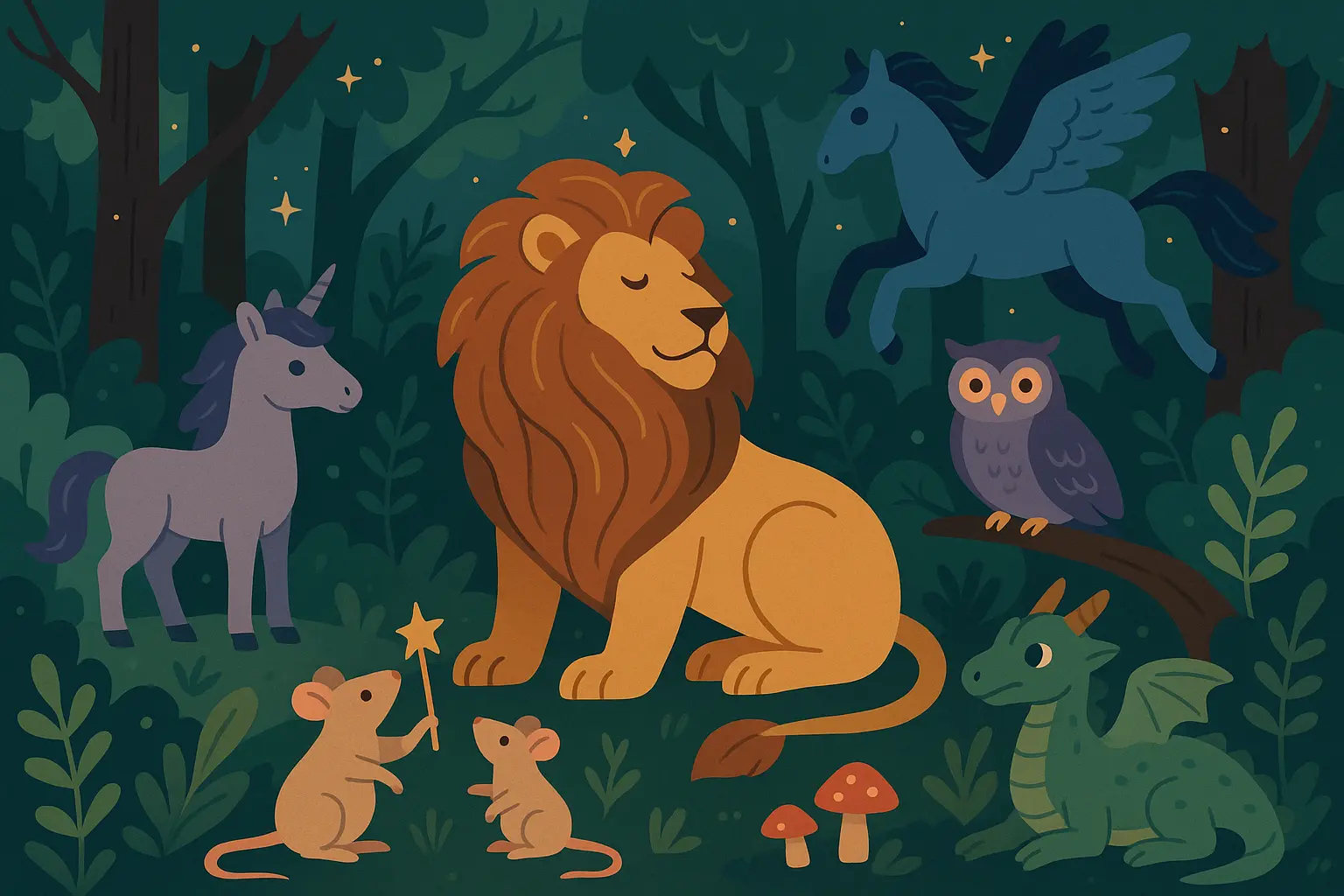
What Actually Works: Real Parent Insights
Let me share what I’ve learned from years of bedtime reading battles, library trips, and watching my kids’ reactions to different books.
The Age Thing Is Tricky
Those age recommendations? Take them with a grain of salt. I’ve seen 6-year-olds handle Charlotte’s Web beautifully and 10-year-olds who still love picture books. Your kid’s emotional maturity matters more than their reading level.
What actually works: Start with books slightly below their reading level for independent reading, and go slightly above for read-alouds. Kids can understand more complex stories when they’re not struggling with the words.
Emotional Safety Isn’t About Avoiding All Sadness
Some of the most meaningful conversations I’ve had with my kids came from books that made us cry. The key is being there to process those emotions together.
Red flags to watch for:
-
Graphic violence or animal cruelty
-
Themes that might trigger specific fears your child has
-
Stories that end without hope or resolution
Green lights:
-
Sad moments that lead to growth or understanding
-
Characters who face challenges but find ways to cope
-
Stories that acknowledge difficult emotions but don’t dwell on them
The Discussion Factor Is Huge
The best animal stories give you natural conversation starters. Not forced “what did we learn” moments, but genuine curiosity from your kid.
Example: After reading “The Great Kapok Tree,” my daughter started noticing trees everywhere and asking about rainforests. That led to looking up conservation groups online, which led to her choosing a rainforest charity for her birthday donations. All from one picture book.
A parent noticed their 8-year-old struggling with playground conflicts, so they introduced Frog and Toad’s “The Letter” story, where Toad feels sad because he never receives mail. After reading how Frog secretly writes Toad a letter, the child began writing encouraging notes to classmates who seemed lonely, directly applying the story’s lesson about thoughtful friendship.
Cultural Representation Matters More Than You Think
Kids notice when all the characters look the same or come from the same backgrounds. Books like “Brother Eagle, Sister Sky” and “The Polar Bear Son” offer perspectives that are often missing from mainstream children’s literature.
Pro tip: If you’re not sure about cultural accuracy, ask your librarian. They’ve usually done the homework on which books get it right.
Humor Is Your Secret Weapon
Books that make you both laugh out loud are pure gold. “Click, Clack, Moo” had my whole family cracking up, and my kids still quote it years later. Shared laughter creates positive associations with reading that last way beyond any educational content.
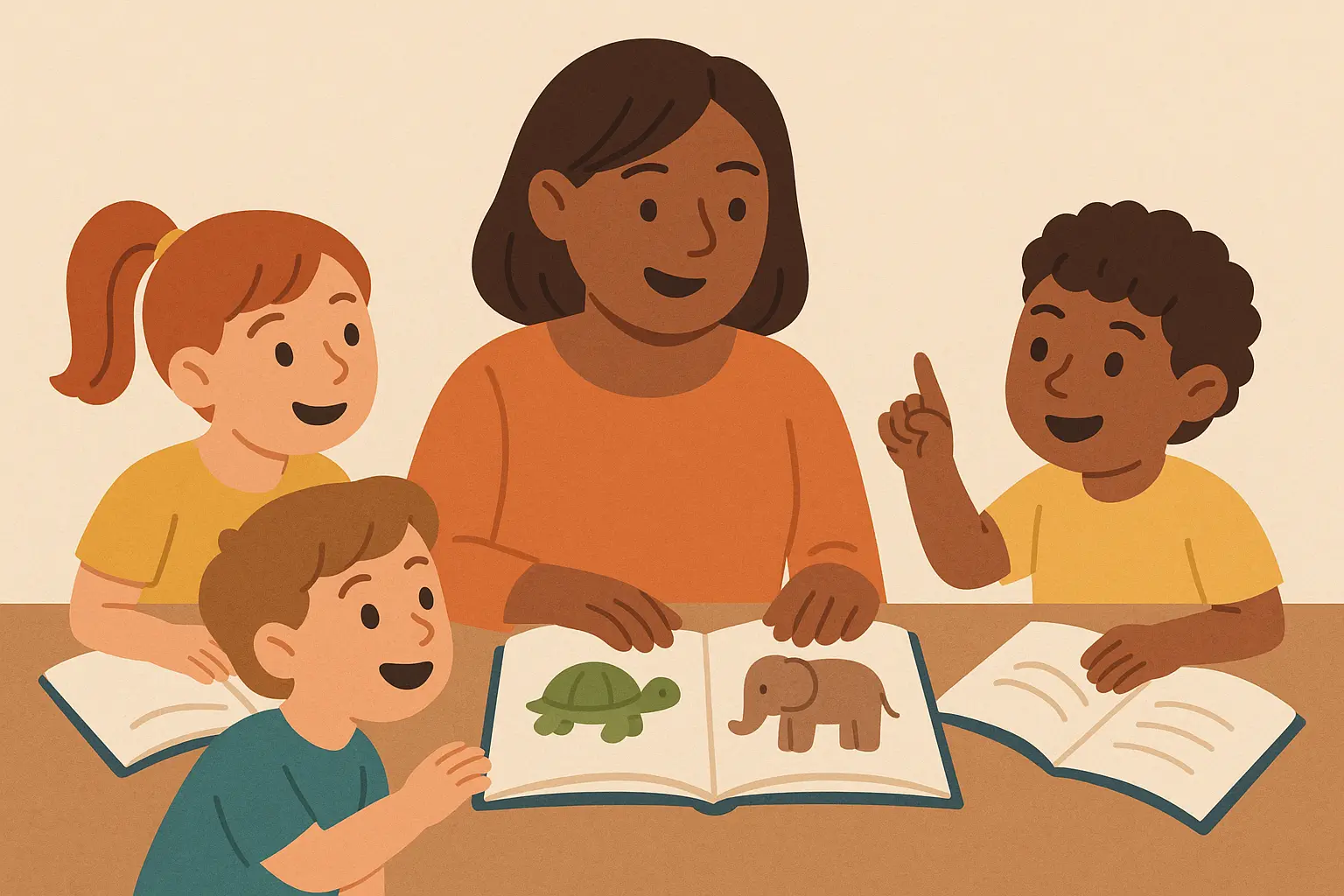
|
Emotional Safety Level |
Story Examples |
Age Recommendations |
Discussion Support Needed |
|---|---|---|---|
|
High Safety |
Rainbow Fish, Frog and Toad, Rosie’s Walk |
3-8 years |
Minimal guidance required |
|
Moderate Challenge |
Stellaluna, Owen and Mzee, One and Only Ivan |
6-10 years |
Some discussion helpful |
|
Requires Support |
Charlotte’s Web, Where the Red Fern Grows |
8+ years |
Adult guidance recommended |
How to Actually Use These Books
Here’s the practical stuff that makes the difference between a book that sits on the shelf and one that becomes a family favorite.
Timing Matters
Don’t introduce heavy themes right before bed. I learned this the hard way with “Where the Red Fern Grows.” Save the emotional books for afternoon reading when you have time to process together.
Match books to moods: Silly books for cranky days, adventure stories for restless energy, gentle stories for quiet moments.
Make It Interactive
For picture books: Let kids predict what happens next, point out details in illustrations, make the animal sounds.
For chapter books: Stop at cliffhangers and let them guess what’s coming. Ask “What would you do?” questions.
For any book: Connect it to real life. “Remember when we saw ducks at the park like in this story?”
Don’t Force It
If a book isn’t working, move on. I used to think we had to finish every book we started, but life’s too short for stories that don’t click. There are too many great books out there to waste time on ones that don’t engage your particular kid.
Build on Their Interests
If they love “Charlotte’s Web,” try other farm stories. If they’re obsessed with “Julie of the Wolves,” look for more survival adventures. Follow their enthusiasm rather than trying to force a balanced literary diet.
Create Connections
Visit animals: After reading farm stories, visit a petting zoo or farm. After wildlife adventures, go to a zoo or nature center.
Do related activities: Plant seeds after reading “The Great Kapok Tree,” learn about local birds after “My Side of the Mountain.”
Find the real versions: Look up videos of real manatees after “The Mangrove Tree,” or photos of the actual Owen and Mzee.
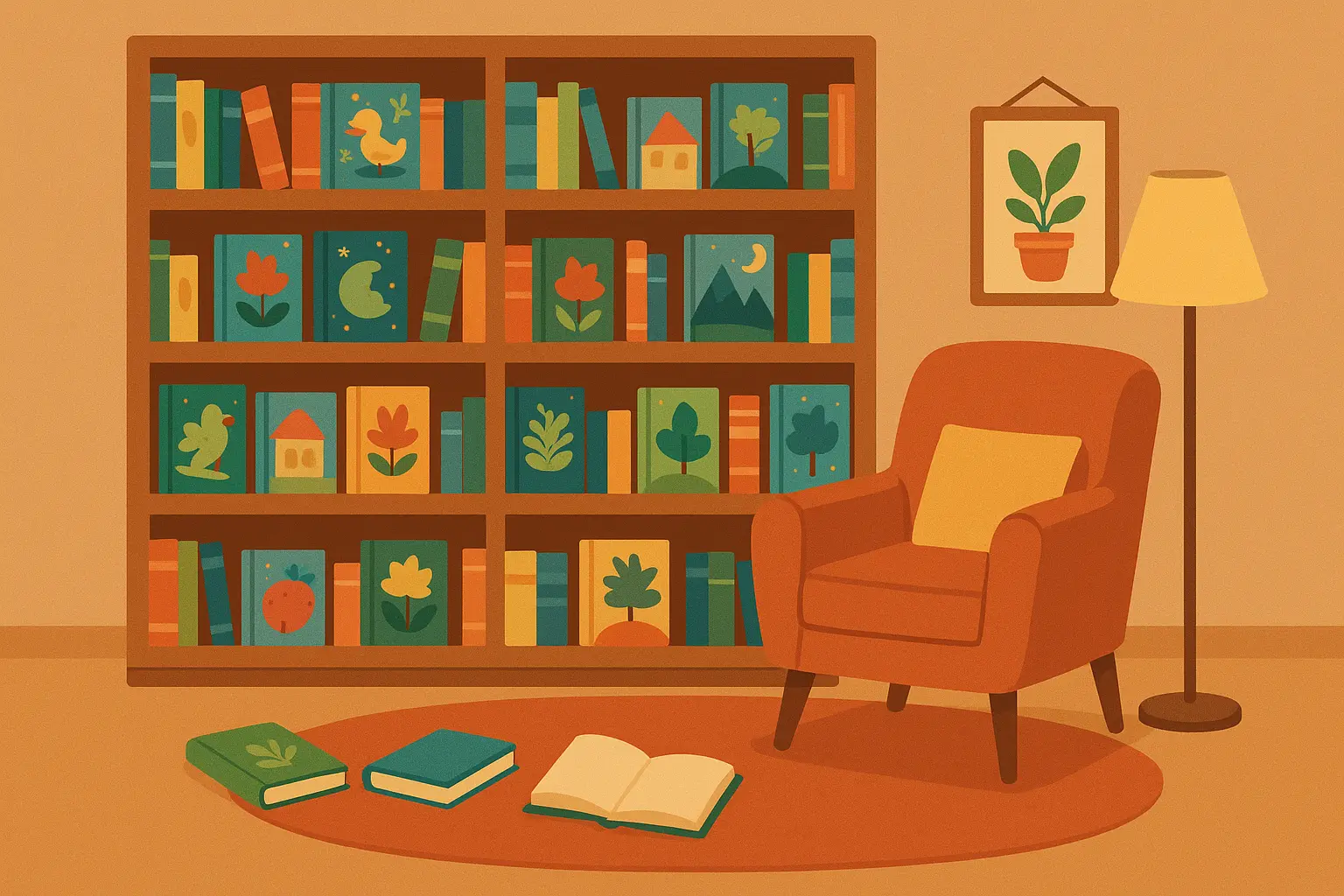
When Books Don’t Work (And That’s Okay)
Let’s be honest – not every highly recommended book is going to be a hit with your kid. I’ve bought so many “award-winning” books that my children found boring or scary or just not their thing.
Common Reasons Books Fail
Too advanced emotionally: Your 7-year-old might be a great reader but not ready for themes about death or loss.
Wrong personality fit: Some kids love gentle, quiet stories; others need action and adventure.
Timing issues: A book about starting school might be perfect in August but cause anxiety in November.
Individual sensitivities: Some kids can’t handle any animal being in danger, even temporarily.
What to Do Instead
Don’t push it. Forcing a book rarely creates positive reading associations.
Try again later. Books that don’t work at age 6 might be perfect at age 8.
Ask your kid what they didn’t like. Sometimes it’s fixable – maybe they just need more background information or emotional preparation.
Trust their instincts. Kids are pretty good at knowing what they can handle.
These fantasy elements often incorporate universal themes similar to those explored in our analysis of transformative story themes.
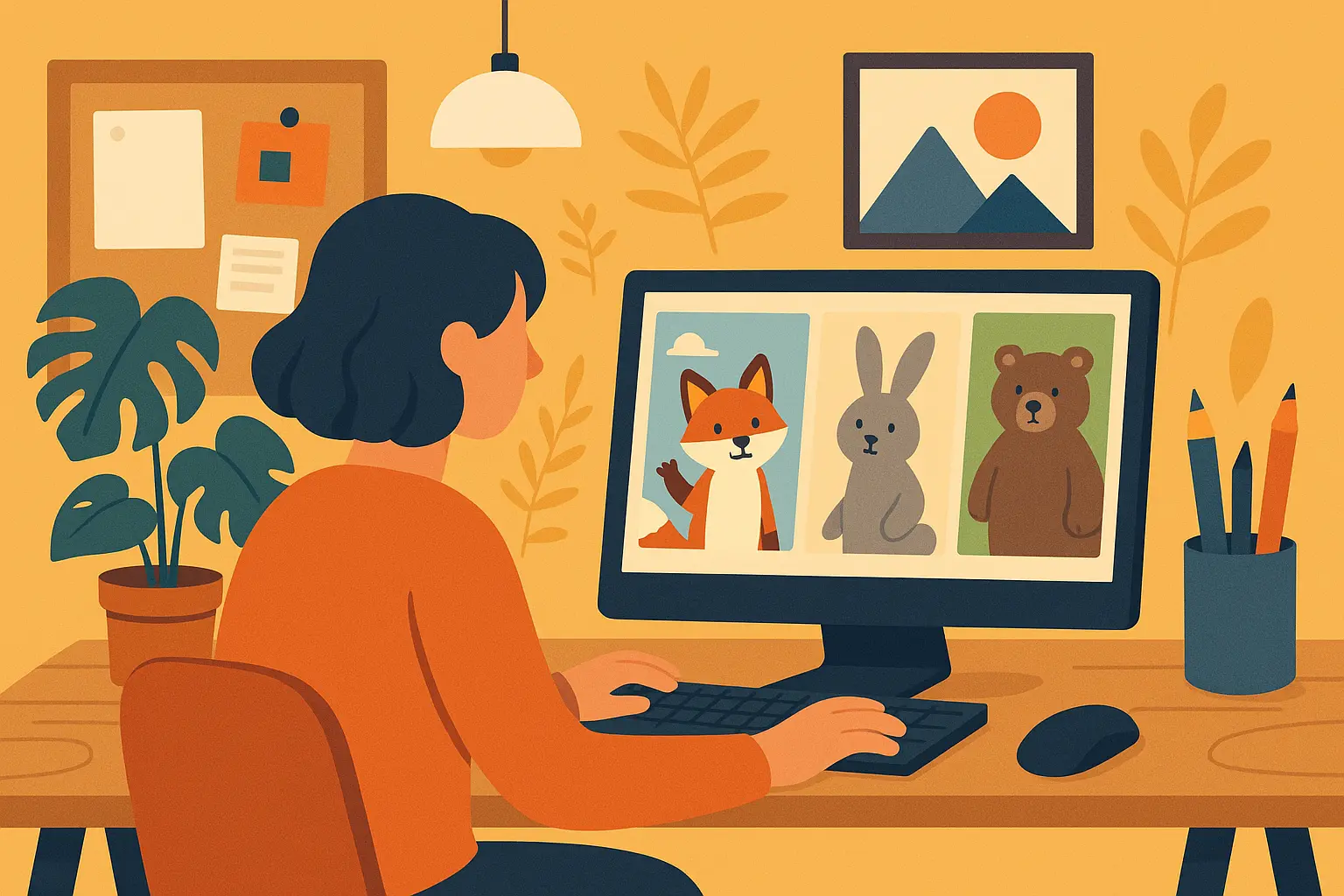
Creating Your Own Animal Stories
Want to try your hand at creating personalized animal stories? Sometimes the perfect book for your kid doesn’t exist yet – maybe you need a story about your family pet, or local wildlife, or addressing a specific challenge your child is facing.
Nairrate’s AI-powered story generation tools can help parents, educators, and young writers create personalized animal stories that capture the magic of classic tales while addressing specific learning objectives or local interests. The platform enhances natural creativity rather than replacing it, helping overcome creative blocks and discover new narrative possibilities.
Getting Started with Custom Stories
Our story starters generator provides the perfect foundation for creating engaging animal tales that rival classic children’s literature. You might begin with a prompt about farm animals discovering they can communicate with wild creatures, then develop this concept into a full narrative that captures the same magic as classics like Charlotte’s Web or Click, Clack, Moo.
Educational Story Development
For educators and parents, these tools can help create animal stories that address specific learning objectives or local environmental concerns. Want to teach about your region’s wildlife? You can develop short animal stories featuring local species, combining the engaging elements of classics like The Great Kapok Tree with content specifically relevant to your children’s experiences.
Building on What Works
Many beloved animal stories began with simple concepts that were expertly developed. Our story generation tools help you craft narratives with the same emotional depth and educational value found in classics like Stellaluna or The Rainbow Fish, while making them uniquely suited to your child’s interests and needs.
Final Reality Check
Here’s the thing about animal stories – they’re not magic bullets that will instantly turn your kid into a bookworm. But they’re pretty close.
These stories work because they tap into something universal: our connection to other living creatures and our desire to understand our place in the world. Whether it’s Wilbur learning about friendship, Julie surviving with wolves, or Peter Rabbit facing consequences, these characters help kids process their own experiences in a safe, engaging way.
Remember:
-
There’s no perfect book, just the right book for your kid right now
-
It’s okay to abandon stories that aren’t working
-
The goal isn’t to check educational boxes – it’s to help your child fall in love with reading
-
Trust your instincts about what your kid can handle
-
Some of the best conversations happen after the book is closed
Don’t stress about finding the “best” animal story. Pick one that sounds appealing, snuggle up together, and see where the story takes you. Sometimes the most unexpected books become the most treasured memories.
And if your kid asks for the same animal story 47 nights in a row? That’s not a bug, it’s a feature. Repetition is how children process and internalize the lessons these stories offer. Embrace it – you’re building a reader, one bedtime story at a time.
The world of animal stories offers incredible opportunities for connecting with your child, teaching important values, and creating those magical reading moments that last a lifetime. Whether you choose timeless classics or discover new favorites, you’re giving your child access to worlds where animals teach us about being human – and that’s a gift that keeps giving long after the final page is turned.



Add comment